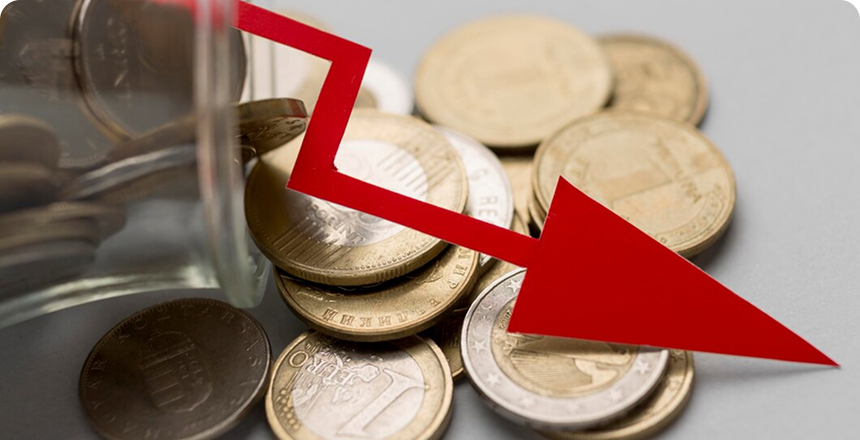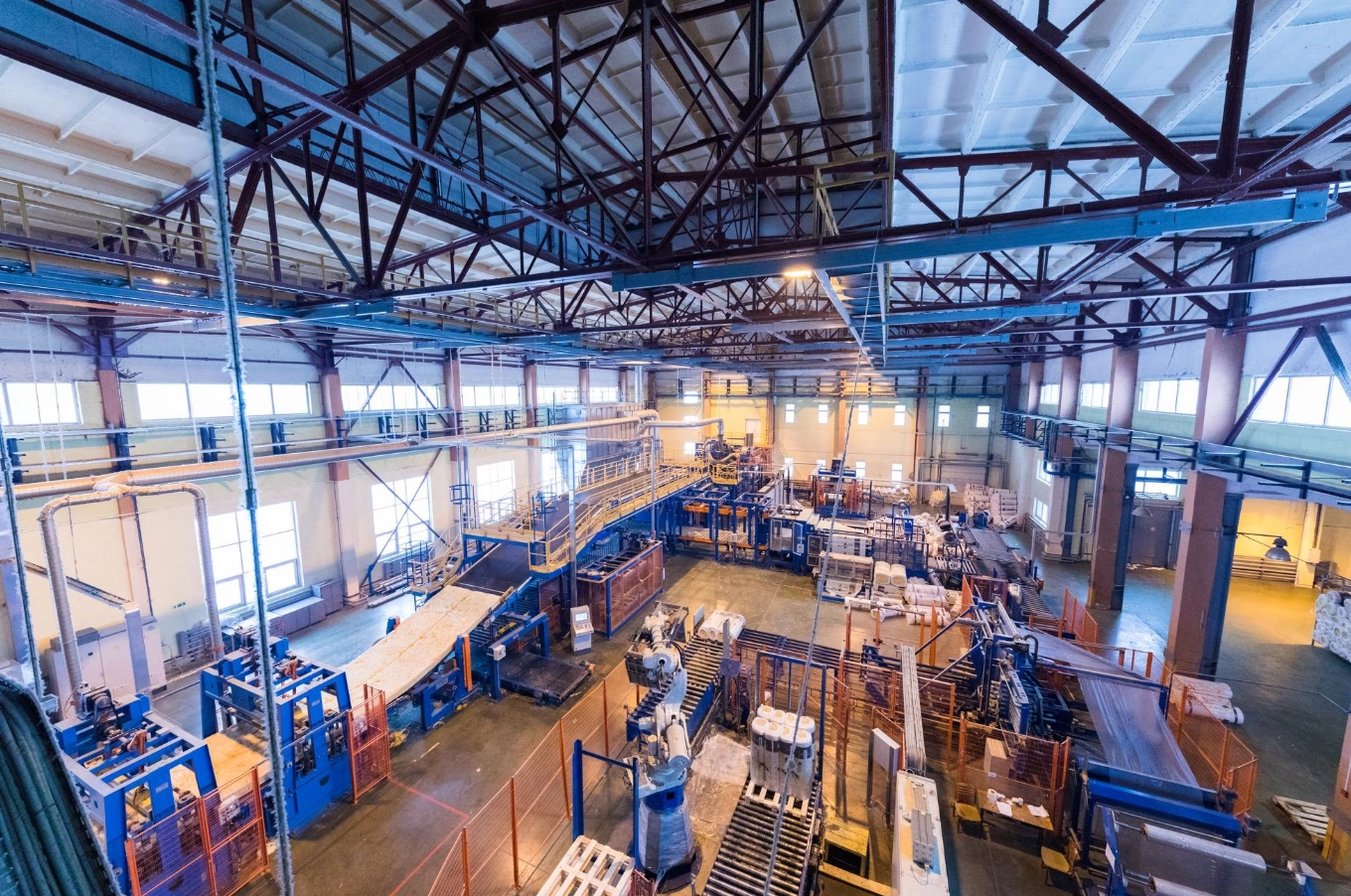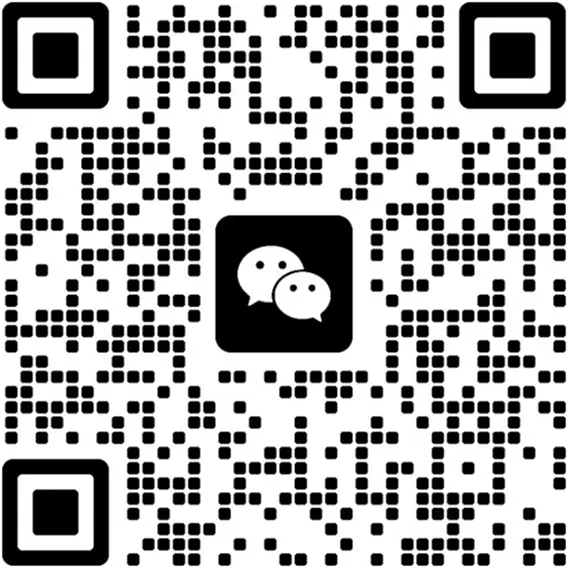Unlock Smarter Facility Operations with SAMEX EAM/FM
The SAMEX Enterprise Asset Management (EAM) solution is designed to revolutionize facility management by providing a comprehensive and intelligent platform to oversee your entire portfolio of assets.
Whats is Facility Management?
Facility management is a multidisciplinary field that integrates people, places, processes, and technology to ensure the functionality of the built environment. It includes:
Facility Maintenance
Routine upkeep and management of core infrastructure such as building structures, mechanical and electrical systems, and fire safety systems.
Environmental Management
Security patrols, sanitation and cleaning, and indoor environmental quality (including air quality, temperature, and humidity).
Public Services
Tenant management, tenant services, and visitor management.
Comprehensive Facility Management, One-Stop Solution
Smart facility management solutions form an interconnected and highly adaptable building ecosystem

Maintenance Management
A platform for facility documentation, facility inspections, maintenance history tracking, and full asset lifecycle management to achieve performance optimization.

Security Patrol
Deploy intelligent patrol systems with GPS tracking and instant alerts to improve safety and responsiveness.

Sanitation & Cleaning
Schedule and track cleaning tasks through digital management to efficiently maintain hygiene levels and instantly demonstrate compliance with cleanliness standards.

Environmental Optimization
Use IoT to monitor air quality, lighting, and temperature to maintain comfortable, energy-efficient environments.

Tenants Service
Provide digital service requests, instant updates, and feedback channels to improve tenant satisfaction.

Work Order Dispatch
Automate the creation and assignment of work orders to ensure timely resolution and better resource allocation.

Inventory Control
Ensure the immediate availability of critical equipment replacement parts (such as HVAC system filters and circuit boards) through inventory control to prevent downtime losses.

E-Procurement
Digitally manage the entire procurement process, covering demand confirmation, tendering, inquiries, payments, and more.
Benefits of Smart Facility Management
Smart facility management refers to integrating cutting-edge technologies and data analytics into building management practices to enhance safety, efficiency, and environmental sustainability.

Enhanced Operational Efficiency
Monitoring of facility operations to quickly detect and address anomalies.
Streamline workflows through automation, reducing manual inspections and recordkeeping.

Reduced Operating and Maintenance Costs
Predictive maintenance minimizes unexpected breakdowns and costly emergency repairs.
Optimize equipment life cycles to delay asset replacement.

Improved Safety and Reliability
Continuously monitor critical systems (power, cooling, fire safety, etc.) to provide early risk warnings.
Ensure both facilities and personnel operate in a safe environment.

Support for Sustainability
Track and optimize energy consumption to reduce both usage and carbon emissions.
Implement resource allocation strategies for greener operations.

Data-Driven Decision Support
Collect and analyze data on equipment, environment, and usage to generate visualized reports.
Use data trends to forecast future demands and support strategic planning.
Facility Health Score Improved
Service Response Efficiency Increased
Maintenance Costs Reduced
Industry Solutions
Suitable for all types of facilities and venues
Manufacturing Plants
Production line maintenance
Equipment performance tracking
Compliance management
Healthcare Facilities
Medical equipment maintenance
Regulatory compliance
Sanitization tracking
Property Management
Building systems maintenance
Tenant request management
Preventive maintenance
Modern enterprises rely on smart facility management to optimize maintenance operations, reduce costs, and enhance facility reliability. Whether you manage office buildings, commercial centers, hotels, industrial plants, or healthcare institutions, our solutions deliver tailored smart facility management services to meet your specific needs.
SFM Solution Plans to Suit your Needs and your Budget
SAMEX Web Cloud Hosting
On-Premises
Facility Management - Smart Facility Management Solution
Leveraging AI, IoT, and data-driven solutions to deliver smarter, safer, and more efficient facilities.
SAMEX Enterprise Asset Management
Asset Catalog
The Asset Catalog serves as a critical component that provides the following key functions:
Asset Registration :
Maintains a comprehensive database of all physical assets within the facility, such as equipment, systems, and infrastructure.
Captures detailed information about each asset, including make, model, serial number, installation date, warranty details, and maintenance history.
Enables facility managers to have a centralized and up-to-date view of all assets under their purview.
Asset Lifecycle Tracking :
Monitors the lifecycle stage of each asset, from acquisition and installation to maintenance, repair, and eventual replacement.
Provides visibility into the remaining useful life of assets, allowing for proactive planning and budgeting for future replacements.
Supports decision-making around asset maintenance, upgrades, and capital expenditures.
Asset Performance Monitoring :
Collects and analyzes data on asset utilization, energy consumption, and operational efficiency.
Identifies underperforming or malfunctioning assets that may require attention or replacement.
Provides insights to facility managers for data-driven decision-making and optimization of asset management strategies.
Compliance and Regulatory Tracking :
Maintains records of asset-related compliance requirements, such as safety inspections, environmental regulations, and industry standards.
Alerts facility managers to upcoming compliance deadlines and ensures that all assets are maintained in accordance with relevant regulations.
Supports the facility’s overall compliance and risk management efforts.
Material management
The Material Management function is responsible for the following key functions:
Inventory Management :
Maintaining a centralized database of all materials, supplies, and spare parts required for facility operations and maintenance.
Tracking inventory levels, reorder points, and lead times to ensure the availability of necessary materials.
Optimizing inventory levels to balance cost-effectiveness and operational needs.
Warehouse and Logistics Management :
Overseeing the efficient storage, organization, and distribution of materials within the facility’s warehouses or storage areas.
Implementing effective inventory tracking, labeling, and storage systems to ensure the right materials are available when needed.
Coordinating the delivery and transportation of materials to the point of use within the facility.
Demand Forecasting and Planning :
Analyzing historical usage patterns, maintenance schedules, and project plans to predict future material requirements.
Developing material procurement and replenishment strategies to ensure timely availability and minimize stockouts.
Collaborating with facility managers and other stakeholders to align material management with the facility’s operational needs.
Maintenance and Repair Management :
Maintaining an inventory of critical spare parts and consumables required for equipment and system maintenance.
Ensuring the availability of materials needed for planned and unplanned maintenance activities.
Tracking the usage and consumption of materials to support maintenance cost analysis and budgeting.
Sustainability and Environmental Compliance :
Promoting the use of eco-friendly, energy-efficient, and sustainable materials.
Implementing waste reduction, recycling, and disposal protocols to minimize the facility’s environmental impact.
Ensuring compliance with relevant environmental regulations and sustainability standards.
Contract Management
The Contract Management function is responsible for the following key functions:
Centralized Repository :
Provides a single location for storing all contracts, making it easy for stakeholders to access relevant documents.
Maintains version history to track changes and ensure that the most current contract is always available.
Offers advanced search capabilities to quickly locate specific contracts or clauses.
Automated Workflows :
Automates the contract creation, review, and approval processes, reducing manual effort and errors.
Sends automated alerts for key dates, such as renewal deadlines and compliance checks.
Ensures that only authorized personnel can access or modify contracts, enhancing security.
Generates reports that provide insights into contract performance, utilization, and financial impact.
Compliance Management :
Helps ensure that contracts comply with relevant laws and regulations, reducing legal risks.
Maintains comprehensive logs of all actions taken on contracts, facilitating audits and reviews.
Provides standardized contract templates to ensure consistency and compliance across the organization.
Cost Control :
Monitors spending related to contracts, ensuring adherence to budgetary constraints.
Offers data-driven insights to assist in negotiations for better contract terms and pricing.
Supplier Portal
The Supplier Portal function is responsible for the following key functions:
Streamlined Order Processing :
Allows suppliers to place orders online, simplifying the procurement process and reducing paperwork.
Enables real-time tracking of orders, improving transparency and allowing for proactive management of delays.
Streamlines invoicing processes, reducing errors and accelerating payment cycles.
Performance Management :
Facilitates regular performance reviews based on metrics such as delivery times and quality standards.
Provides channels for suppliers to receive feedback, promoting continuous improvement.
Cost Efficiency :
Enables suppliers to offer bulk order discounts, potentially reducing overall procurement costs.
Helps track and manage costs associated with suppliers, ensuring adherence to budgetary constraints.
Compliance and Risk Management :
Centralizes important compliance documents, making it easier for suppliers to provide necessary certifications.
Maintains comprehensive records of all transactions and communications, enhancing accountability and traceability.
Provides an online bidding platform, making paperless operations more convenient and efficient.
Service Desk
The Service Desk function is responsible for the following key functions:
Centralized Support System :
Acts as a unified channel for all service requests and issues, simplifying communication.
Efficiently tracks and manages service requests through a ticketing system, ensuring nothing is overlooked.
Provides a repository of FAQs and troubleshooting guides, helping users find solutions quickly.
Improved Incident Management :
Streamlines the process of reporting and resolving incidents, minimizing downtime.
Facilitates analysis of recurring issues to identify root causes and implement long-term solutions.
Facilitates automated workflows between service desk and other departments, improving efficiency.
Enables sharing of relevant data across systems, enhancing decision-making and operational effectiveness.
Enhanced User Experience :
Offers users the ability to submit requests and track their status independently, reducing dependency on support staff.
Collects user feedback on service quality, helping to improve support processes.
Work Management
The Work Management function is responsible for the following key functions:
Comprehensive Work Order Management :
Allows for the easy creation and tracking of work orders, ensuring that tasks are documented and monitored throughout their lifecycle.
Enables prioritization of work orders based on urgency and importance, ensuring critical tasks are addressed promptly.
Real-time monitoring of work task progress to ensure timely completion.
Resource Allocation and Scheduling :
Facilitates the efficient allocation of resources (labor, materials, equipment) to various tasks, maximizing productivity.
Offers scheduling tools to plan and assign work efficiently, reducing downtime and overlap of tasks.
Monitors resource availability to ensure that the right personnel and equipment are available when needed.
Preventive and Predictive Maintenance :
Supports the scheduling of preventive maintenance tasks to reduce unexpected equipment failures and extend asset life.
Utilizes data analytics to predict potential failures based on asset conditions, allowing for proactive maintenance actions.
Maintains a history of maintenance activities, aiding in compliance and performance analysis.
Procurement
The Procurement function is responsible for the following key functions:
Streamlined Procurement Process :
Streamlines the approval process through electronic workflows, minimizing delays and enhancing responsiveness.
Replaces traditional paper requisitions and purchase orders with digital forms, reducing manual handling and storage needs.
Allows for real-time monitoring of procurement requests and orders, improving transparency and accountability.
Supplier Management :
Allows for the assessment and selection of suppliers based on performance, quality, and cost-effectiveness.
Tracks key performance indicators (KPIs) related to procurement efficiency and supplier performance.
Identifies potential risks in the supply chain and implements strategies to mitigate them.
Cost Control and Budget Management :
Monitors procurement expenditures against budgets to prevent overspending.
Provides insights into purchasing trends and cost drivers, enabling better financial planning and decision-making.
Provides analytical tools to support strategic decision-making and continuous improvement in procurement practices.
Inventory Optimization :
Analyzes historical data to predict future material needs, reducing excess inventory.
Supports timely purchasing of materials to minimize storage costs and ensure availability when needed.
Tenant Portal
The Tenant Portal function is responsible for the following key functions:
Self-Service Capabilities :
Allows tenants to easily submit maintenance and service requests online, reducing response times.
Tenants can track the status of their service requests in real-time, enhancing transparency and trust.
Provides a platform for tenants to give feedback on completed work, helping management improve service quality.
Announcements and Notifications :
Sends timely alerts regarding maintenance schedules, policy changes, and other relevant information, fostering effective communication between management and tenants.
Facilitates the posting of important announcements and updates, ensuring tenants are informed about community news and events.
Facility Managers
Operational Efficiency :
Streamlining processes and workflows to optimize service delivery
Leveraging technology and automation to improve productivity
Cost Management :
Controlling and reducing operating expenses to maintain profitability
Optimizing resource allocation and labor costs
Customer Satisfaction :
Delivering high-quality services to meet or exceed customer expectations
Ensuring responsive and proactive communication with customers
Risk Mitigation :
Identifying and managing potential risks (e.g., legal, safety, security)
Implementing robust risk management and compliance protocols
Innovation and Technology Adoption :
Staying up-to-date with industry trends and technological advancements
Investing in and integrating new technologies to enhance service delivery
Sustainability and Environmental Stewardship :
Promoting energy efficiency and reducing the carbon footprint of managed facilities Implementing sustainable practices and supporting clients’ sustainability goals
Owner
Cost Optimization :
Reducing operational expenses, such as energy, maintenance, and staffing costs
Maximizing the return on investment (ROI) for facility-related investments
Property Value Appreciation :
Enhancing the overall value and marketability of the property
Implementing strategies to increase the property’s net operating income (NOI)
Regulatory Compliance :
Adhering to local, regional, and industry-specific regulations (e.g., building codes, safety standards, environmental regulations)
Avoiding fines and legal issues related to non-compliance
Facility Users ( Tenants )
Comfort and Productivity :
Maintaining a comfortable indoor environment (temperature, lighting, air quality)
Ensuring the facility supports occupant productivity and well-being
Safety and Security :
Providing a safe and secure environment for occupants and visitors
Implementing effective emergency preparedness and response measures
Responsiveness and Accessibility :
Timely resolution of maintenance requests and service issues
Ease of access and navigation within the facility
Cost-Effectiveness :
Reasonable and transparent rental/occupancy costs
Value-for-money in terms of services and facilities provided
Reputation and Brand Alignment :
Alignment of the facility’s image and reputation with the tenant’s brand
Positive perception and prestige associated with the facility
Suppliers
Clear Communication and Collaboration :
Establishing open and transparent communication channels with the facility management company
Collaborating on product/service development, process improvements, and problem-solving
Quality and Compliance Standards :
Meeting the facility management company’s quality, safety, and regulatory requirements
Maintaining consistent product/service quality and adherence to industry standards
Risk Mitigation and Business Continuity :
Identifying and managing potential risks, such as supply chain disruptions and regulatory changes
Ensuring business continuity and the ability to maintain uninterrupted service delivery
Strengthen the efficiency and quality of Facility Management
Through regular facility maintenance and inspections, potential issues can be promptly identified and resolved, ensuring the workplace safety. Additionally, this process aids property managers in enhancing their management efficiency, enabling more rational resource allocation and facility maintenance planning.
Need Further Information ?








